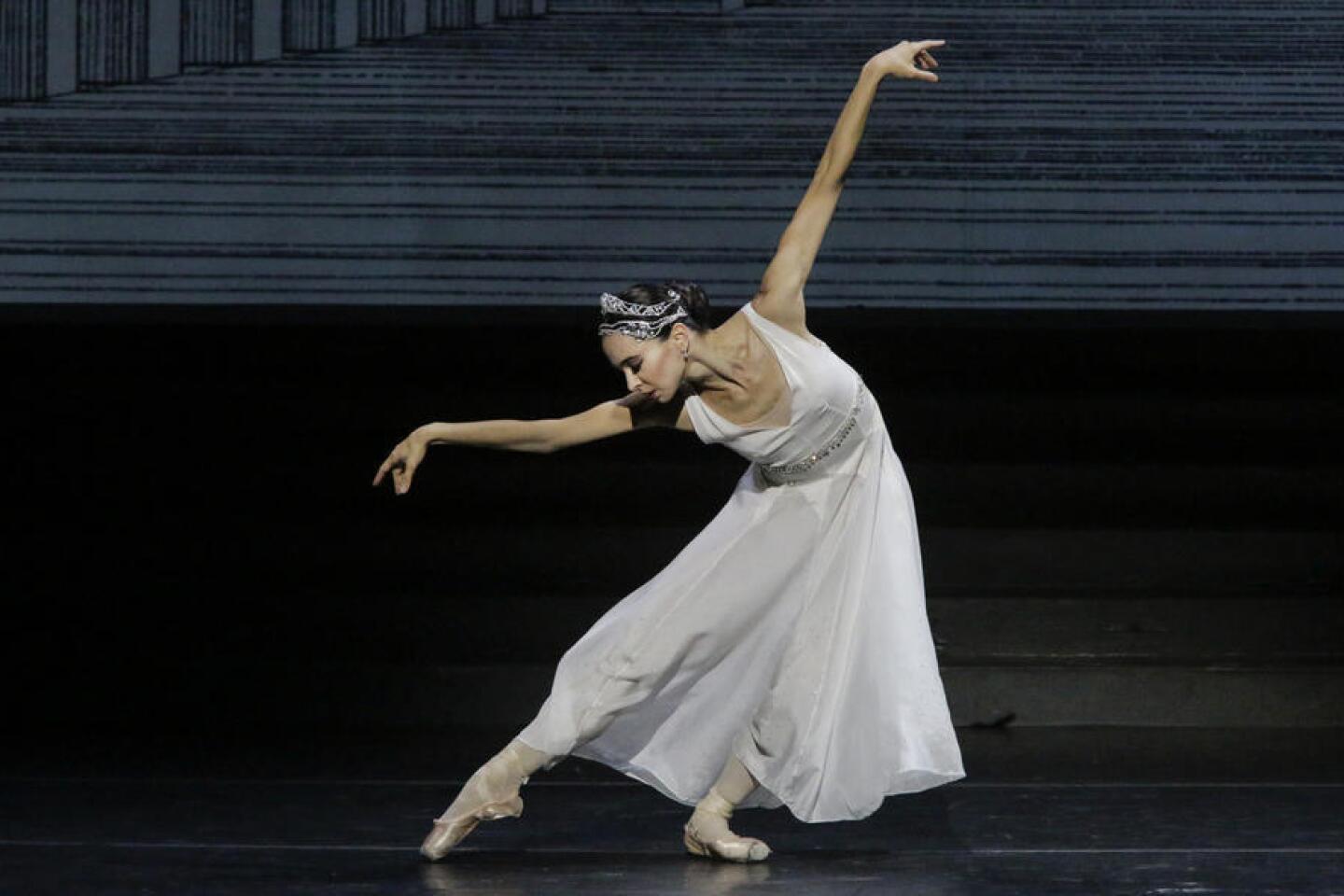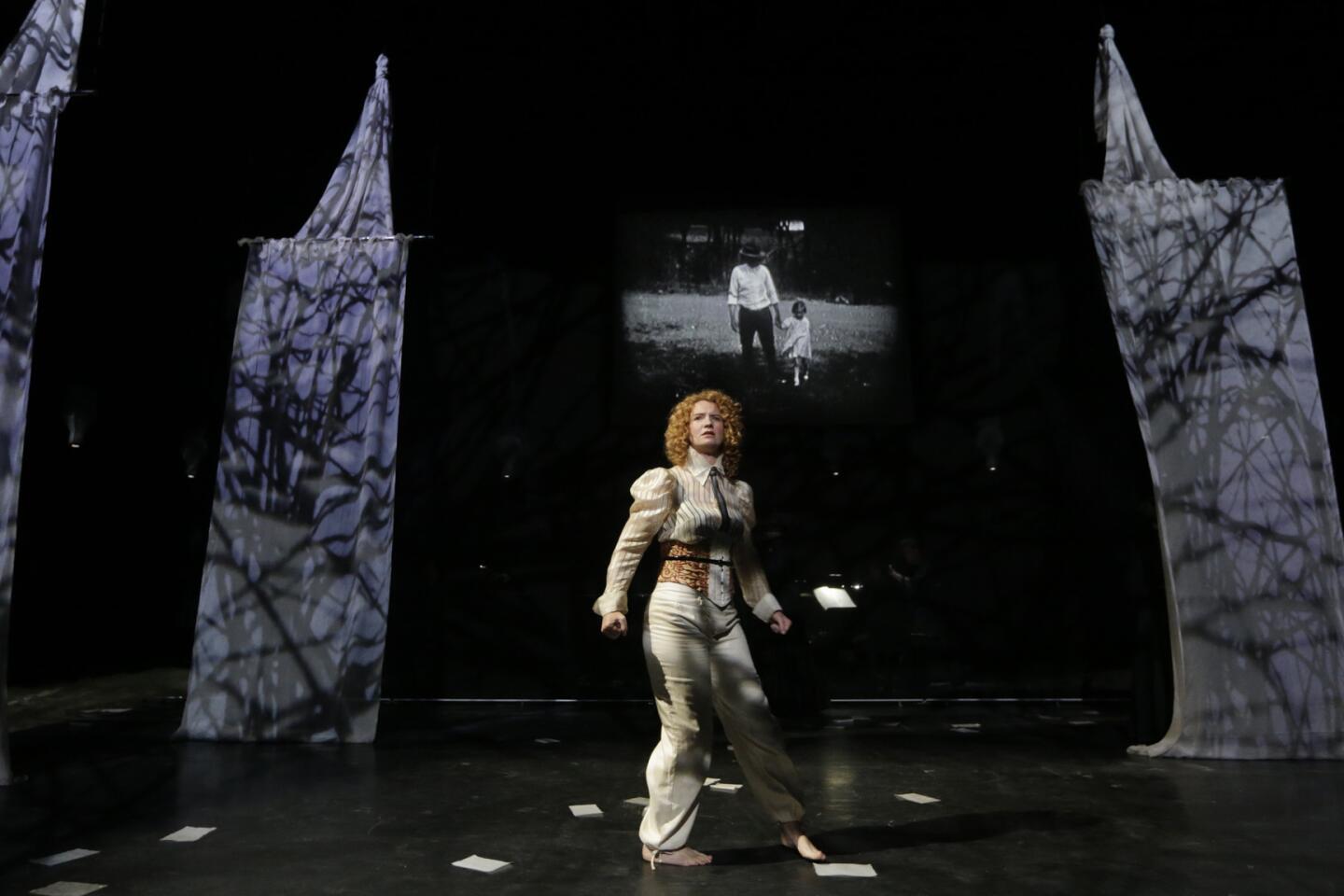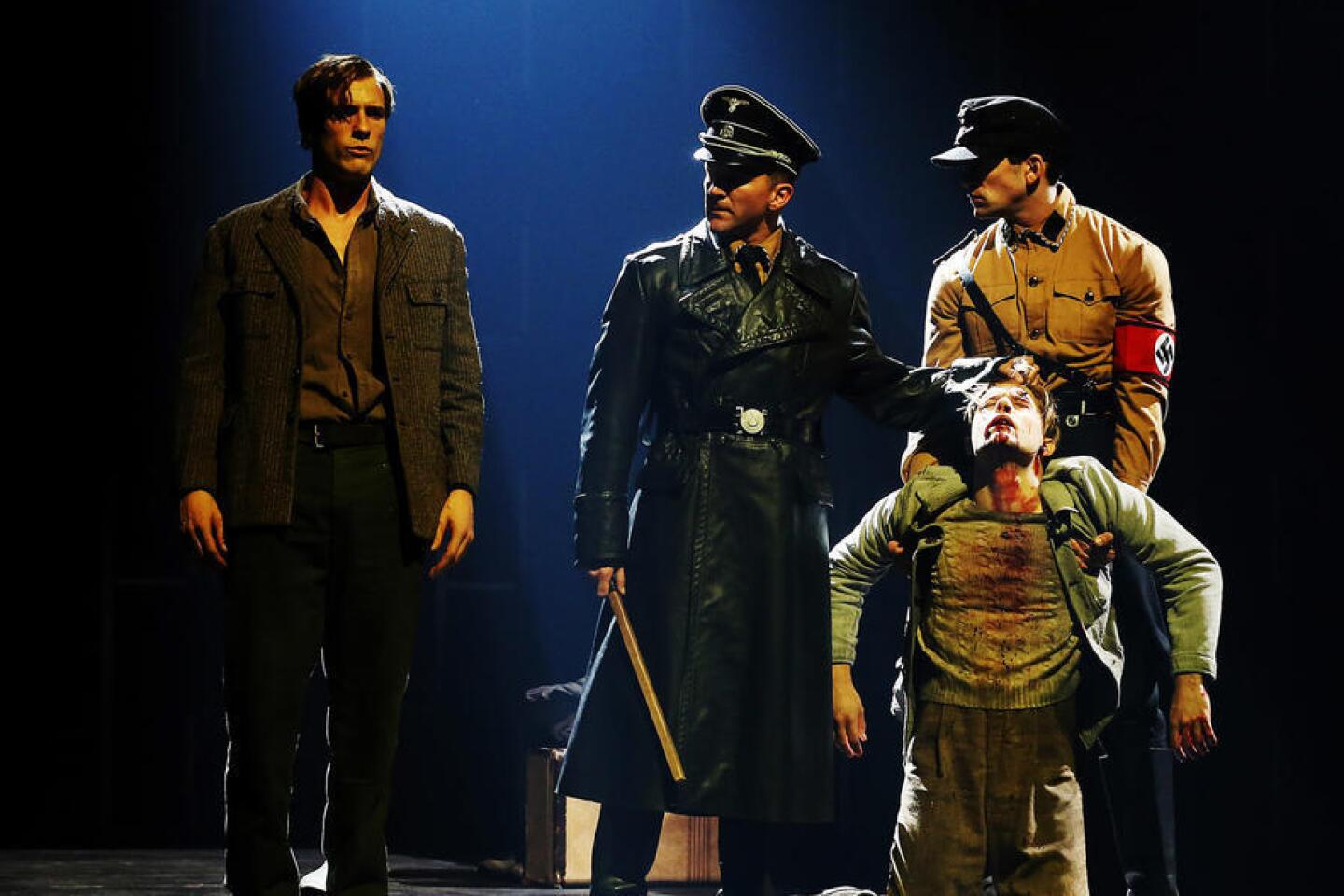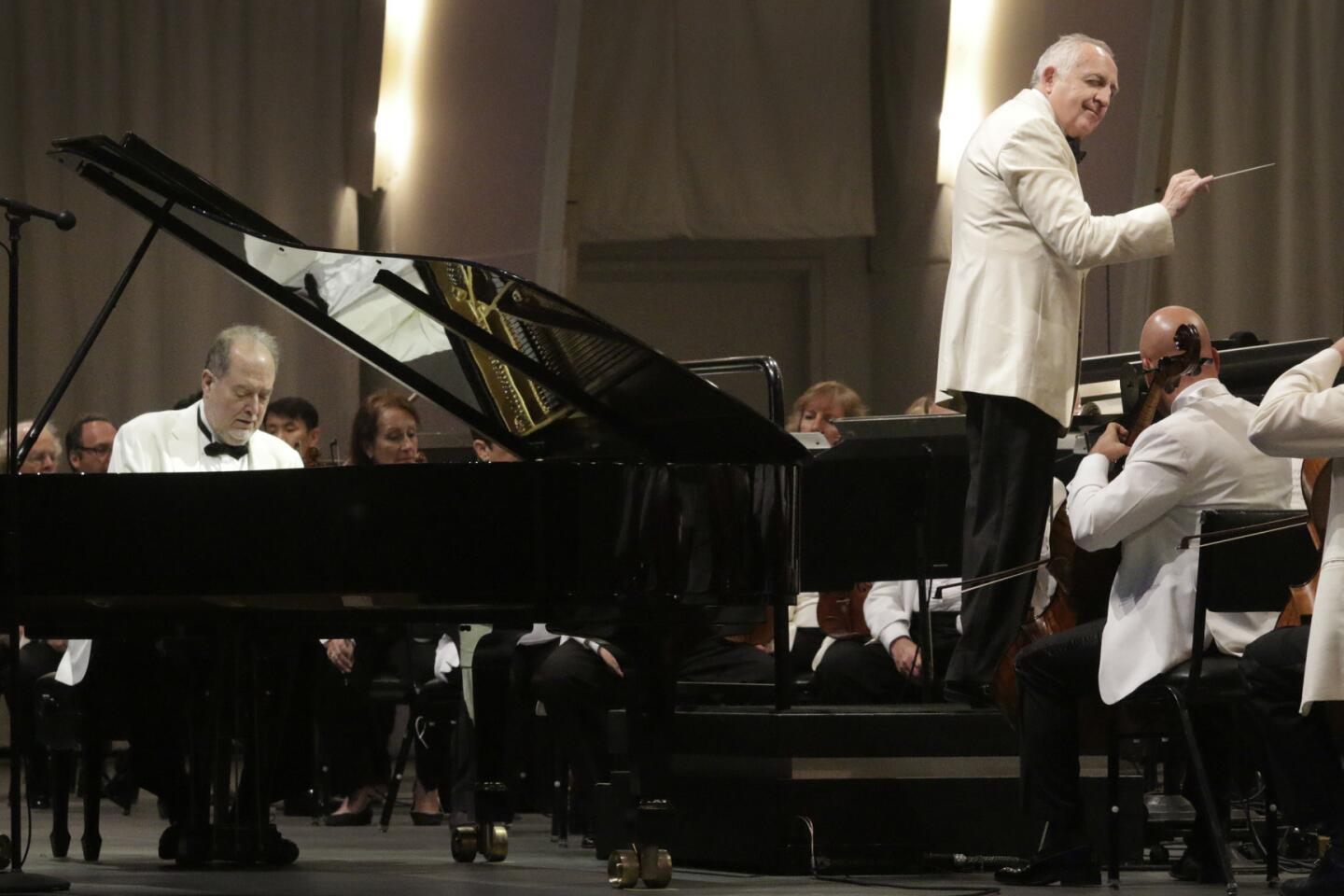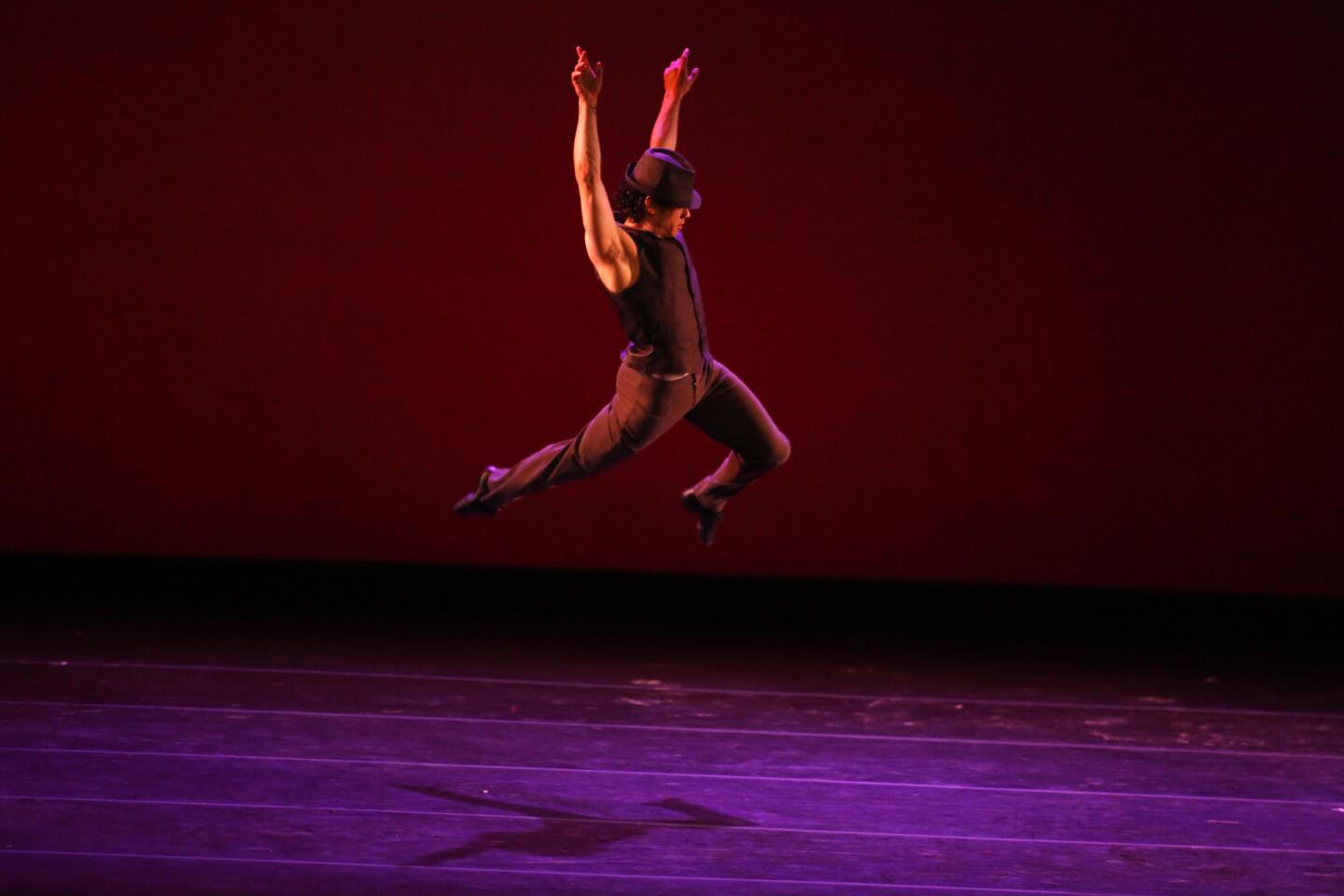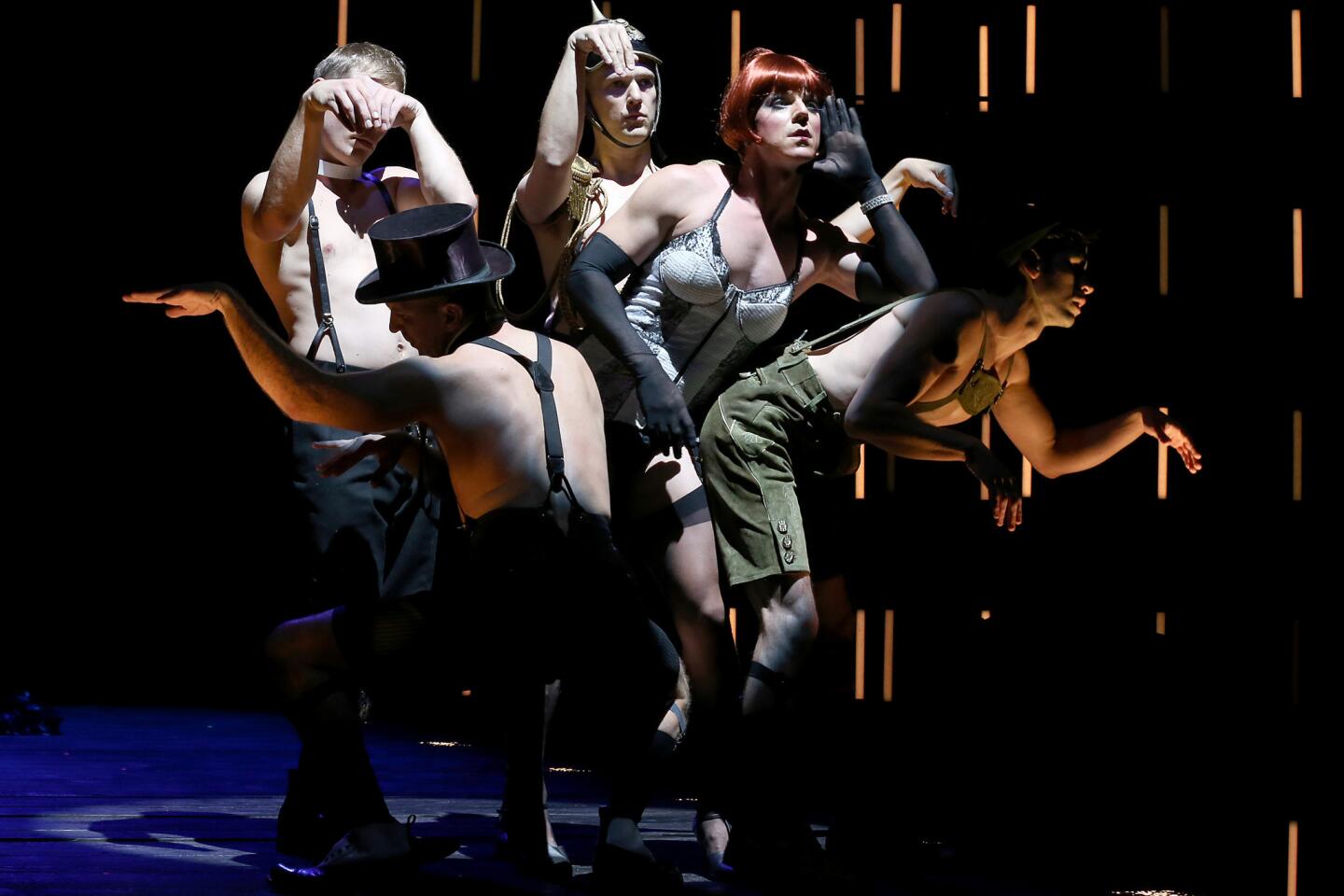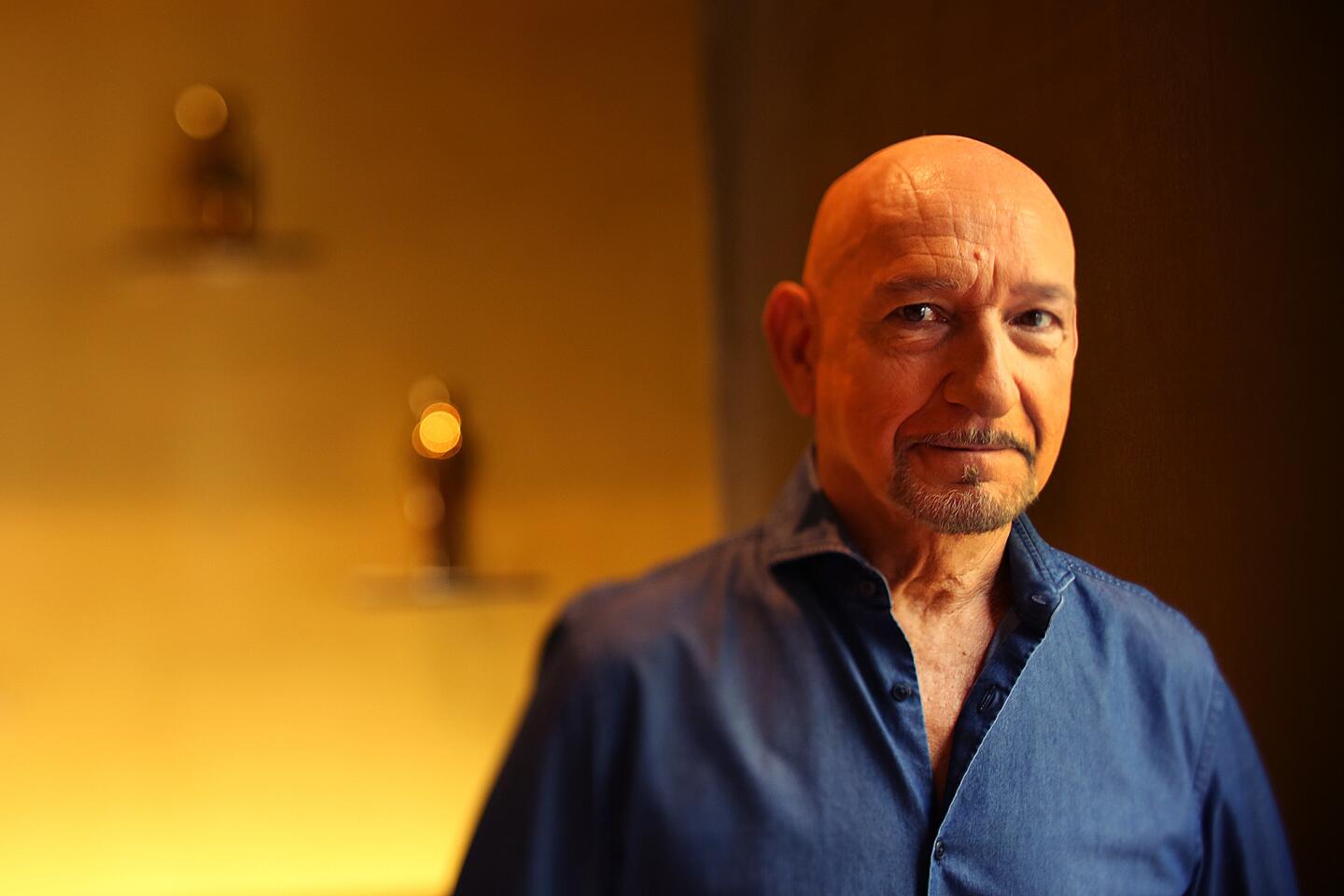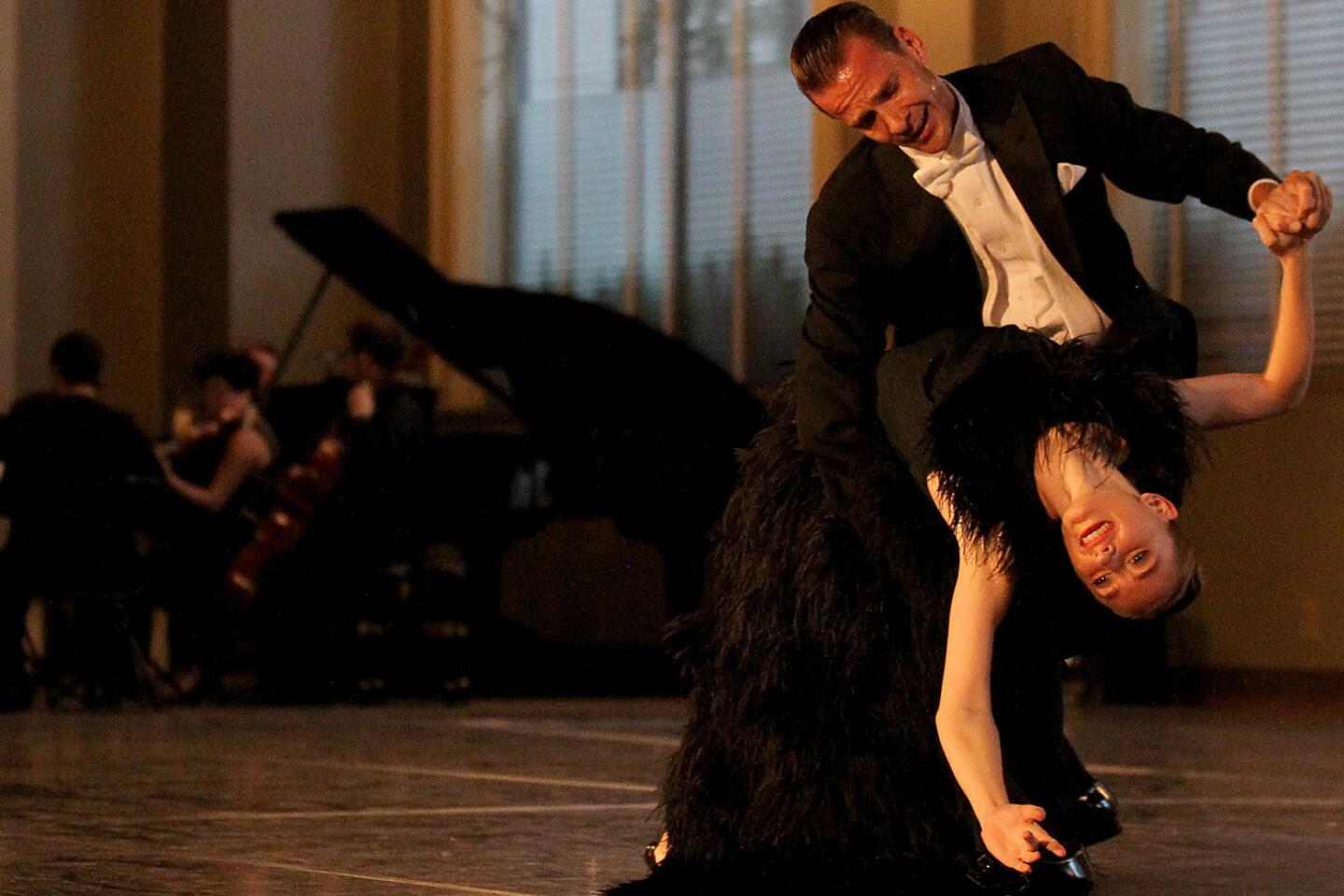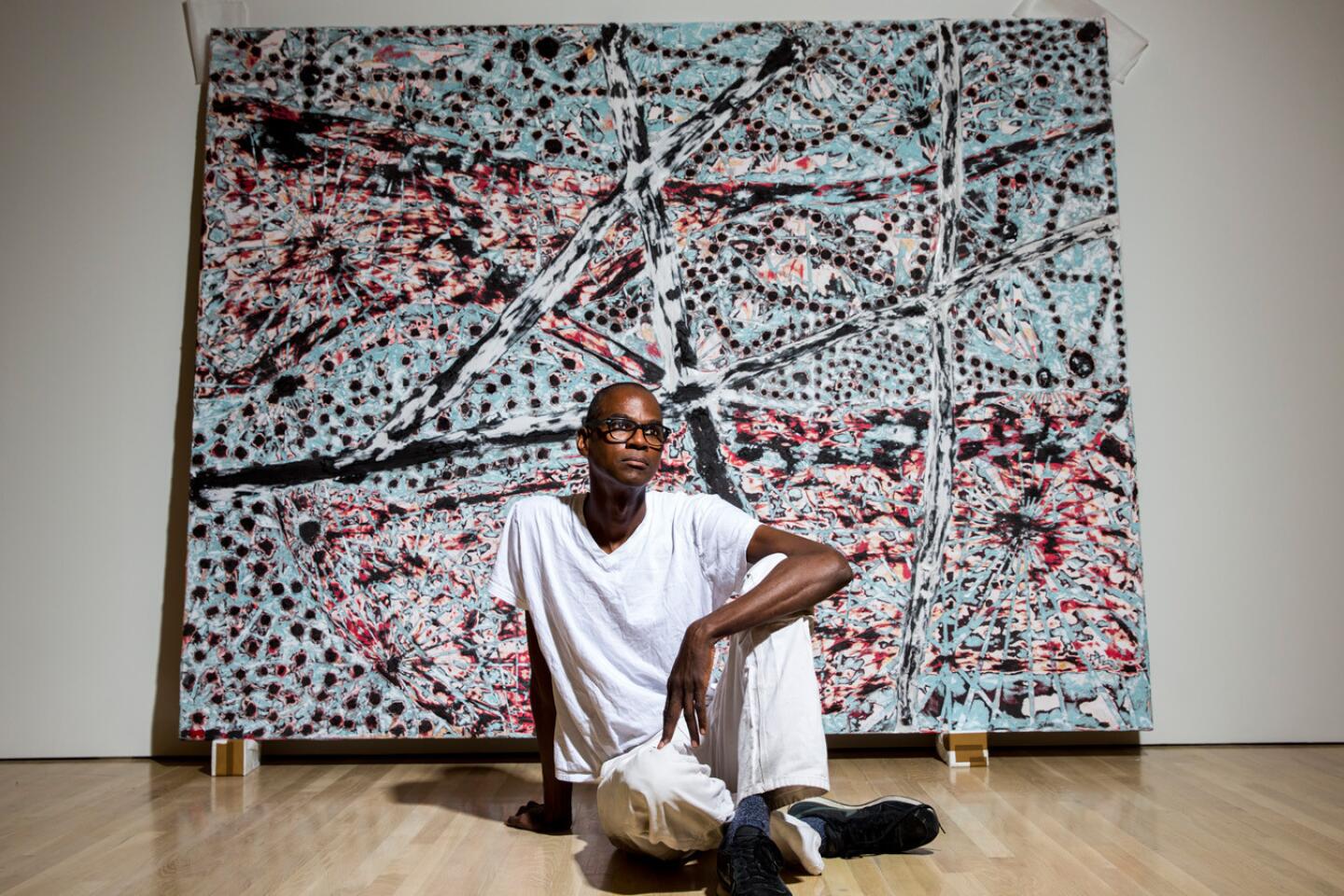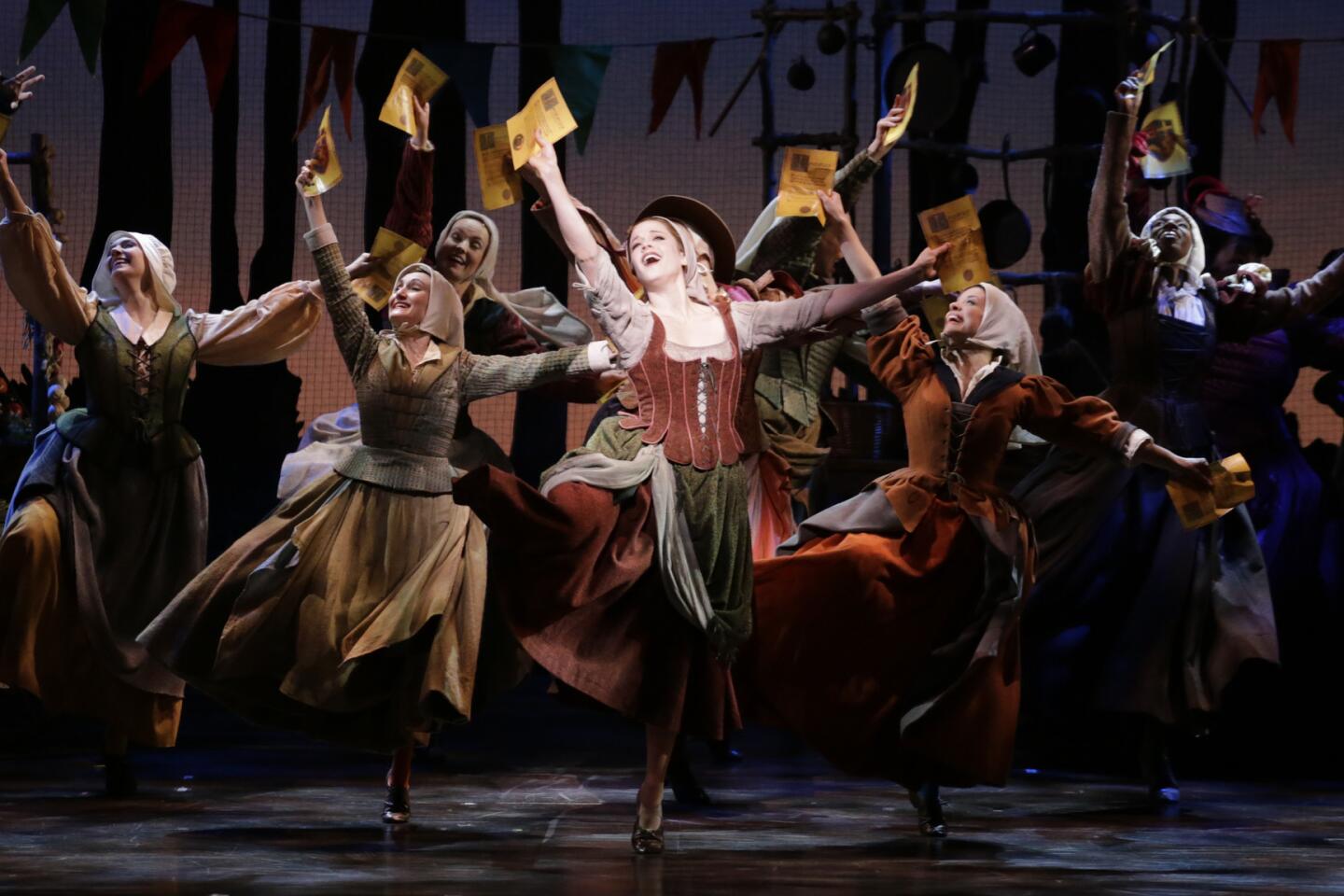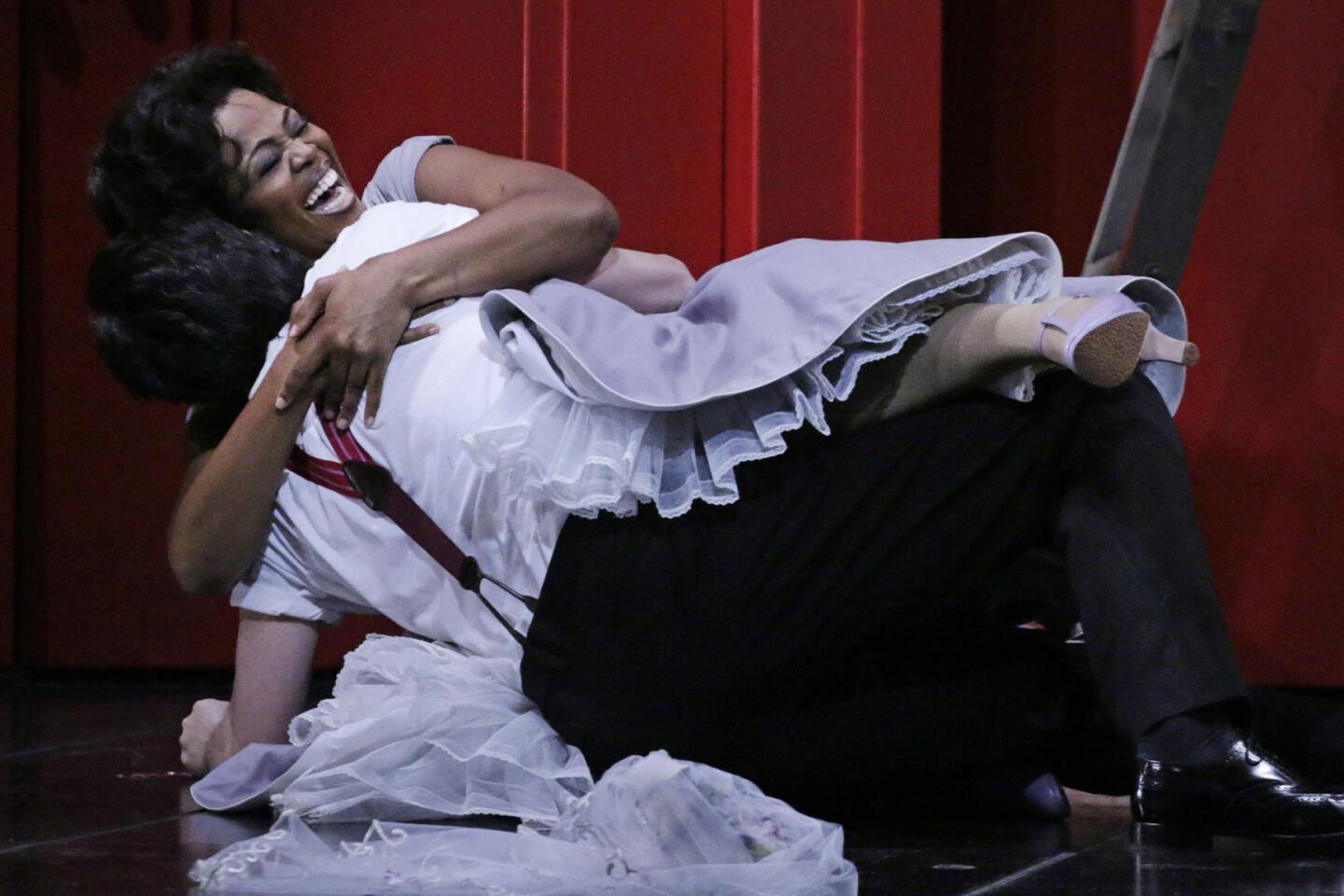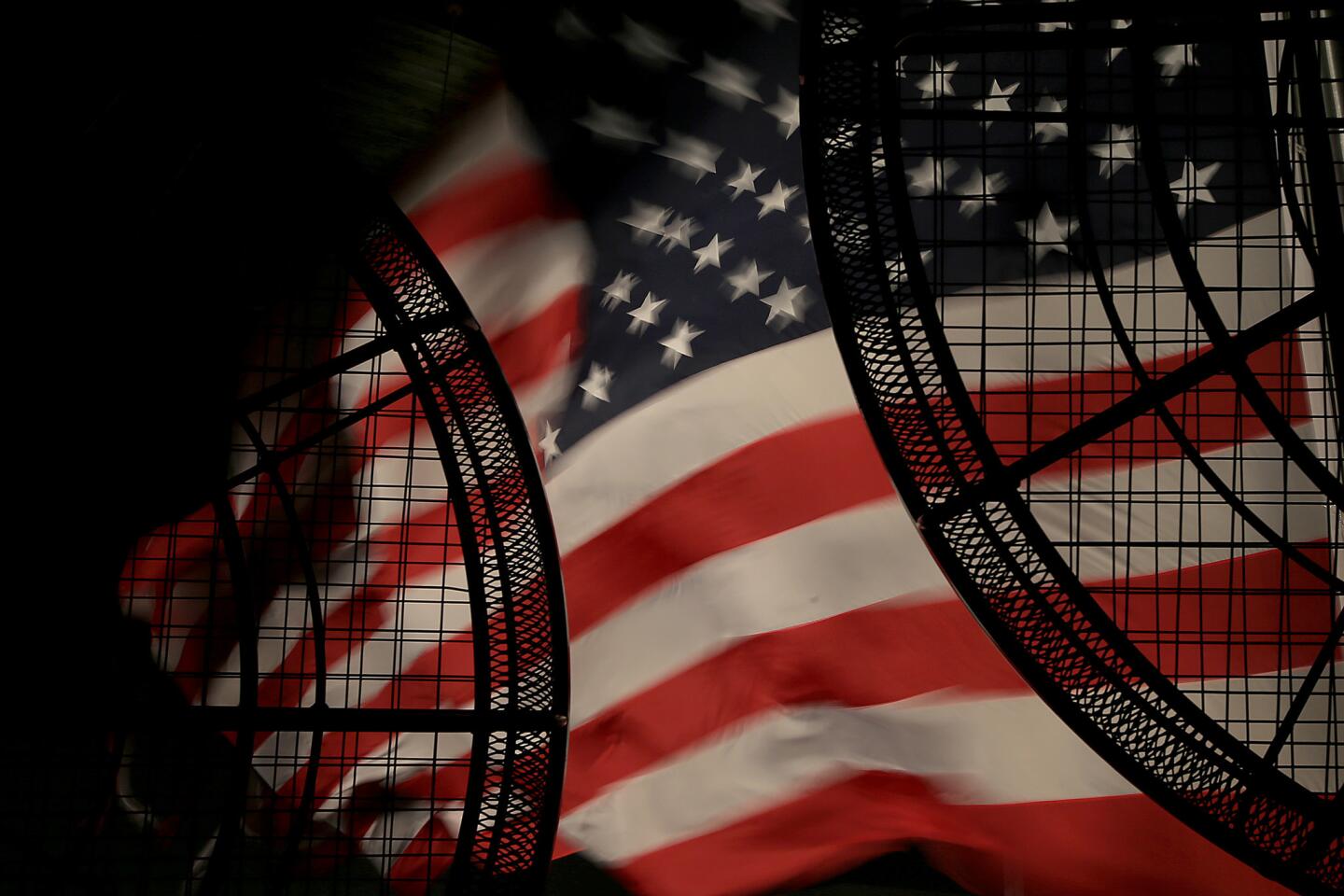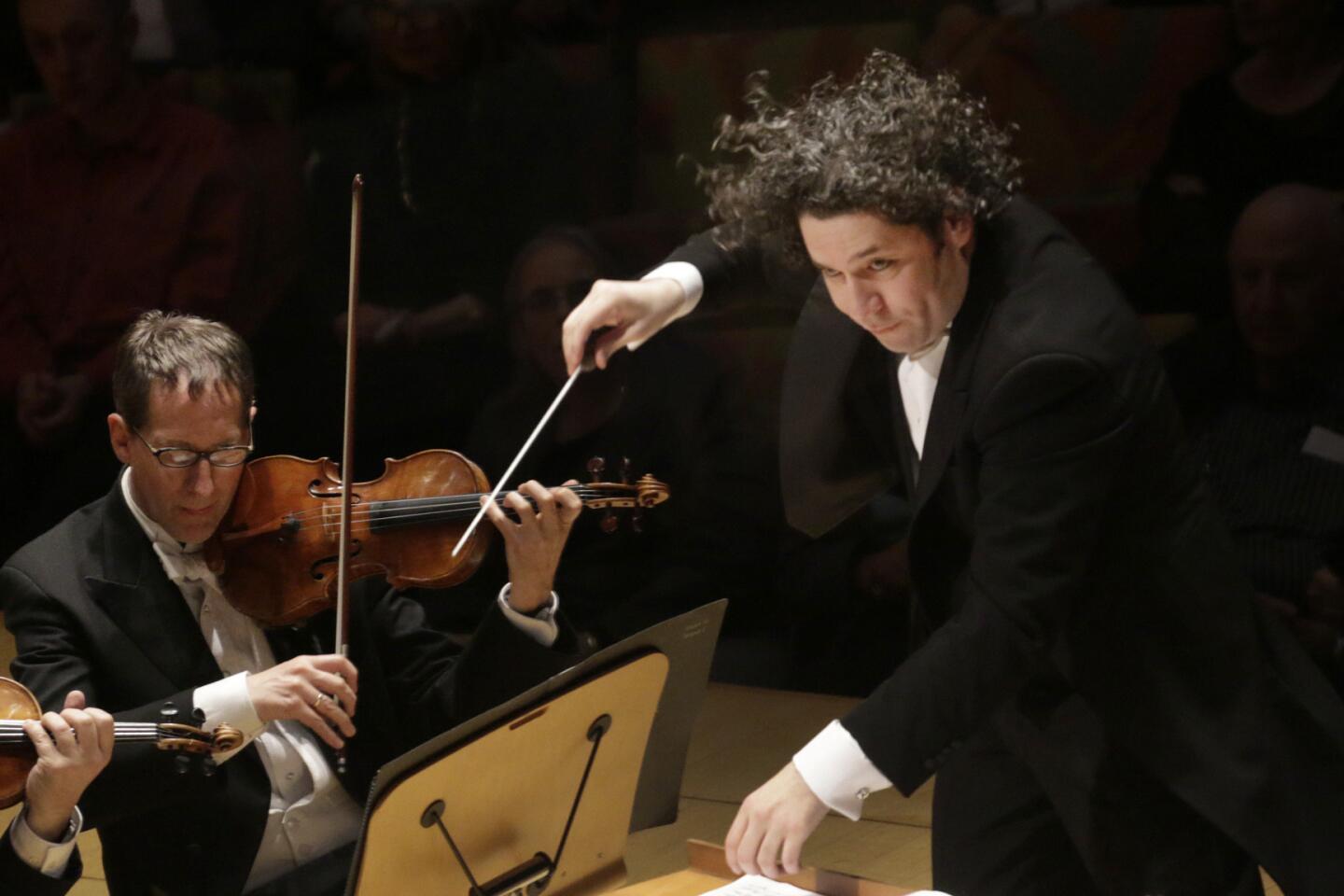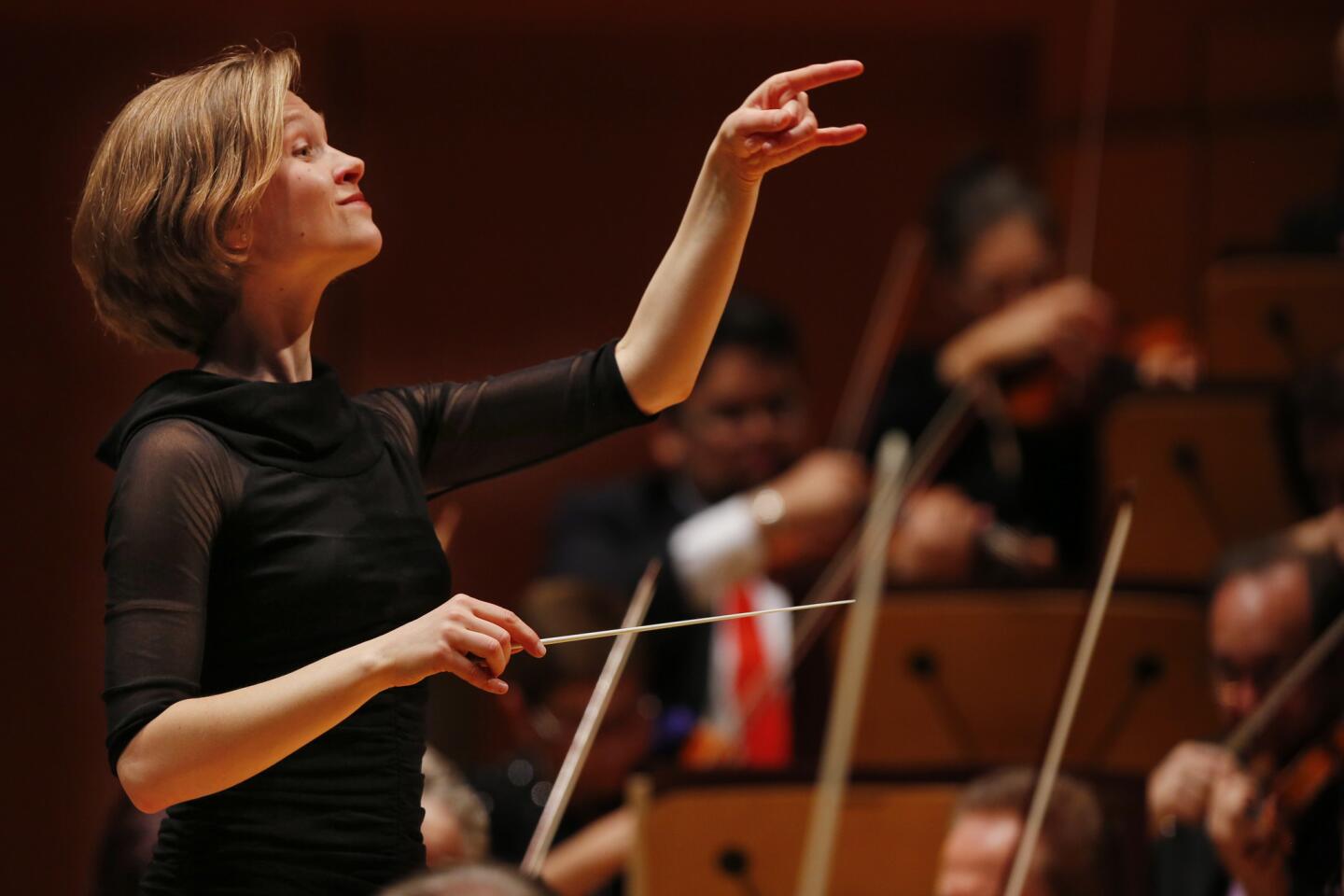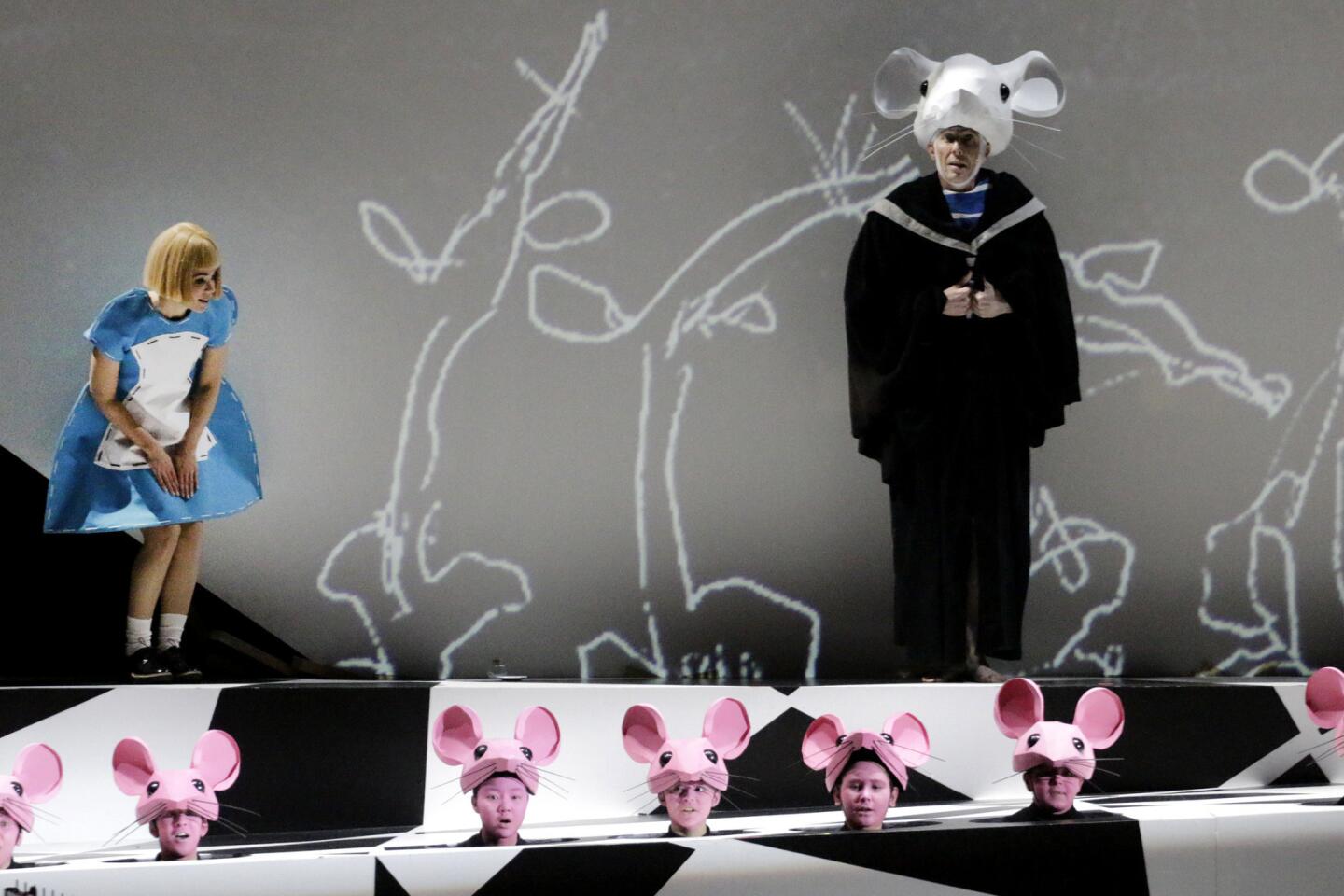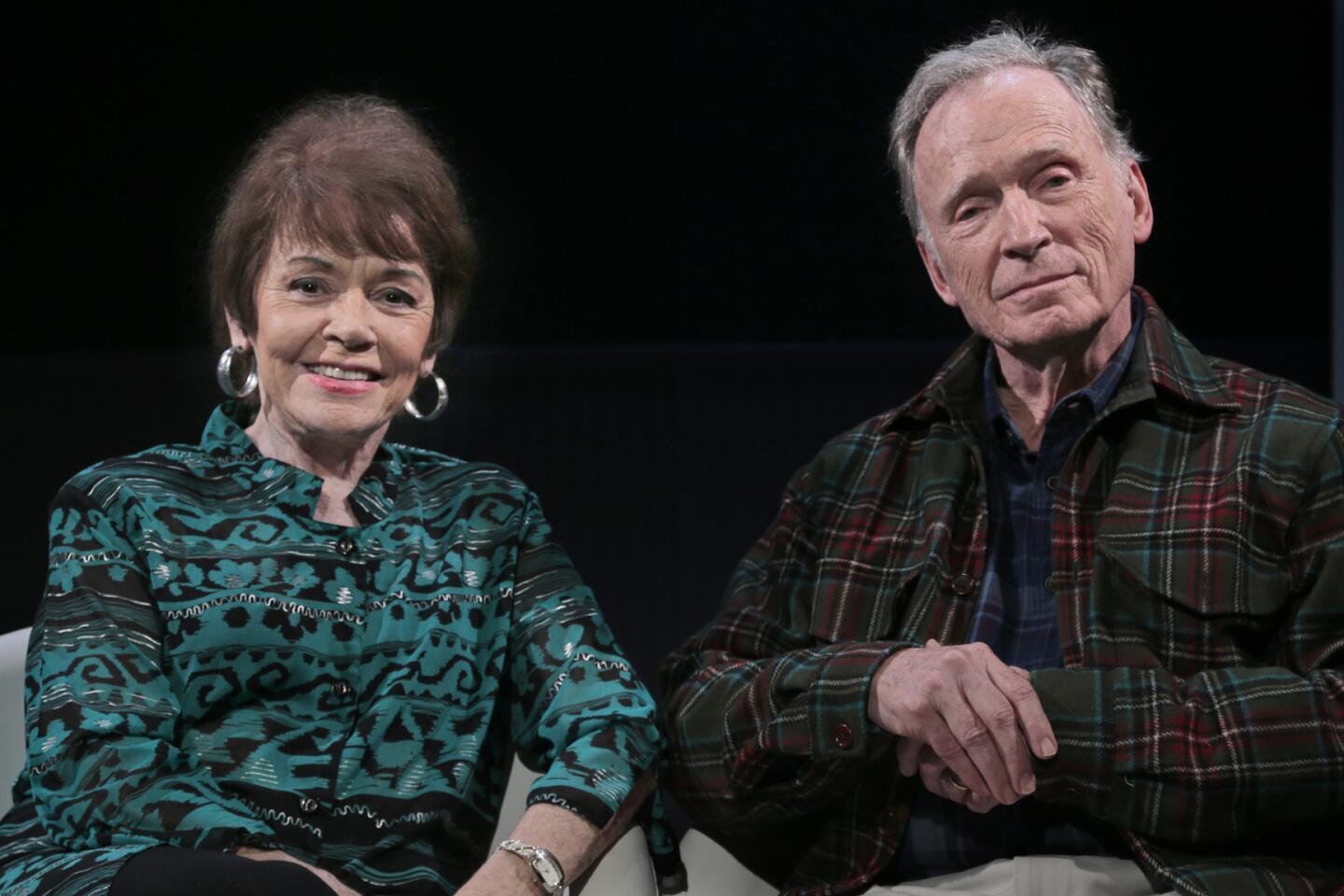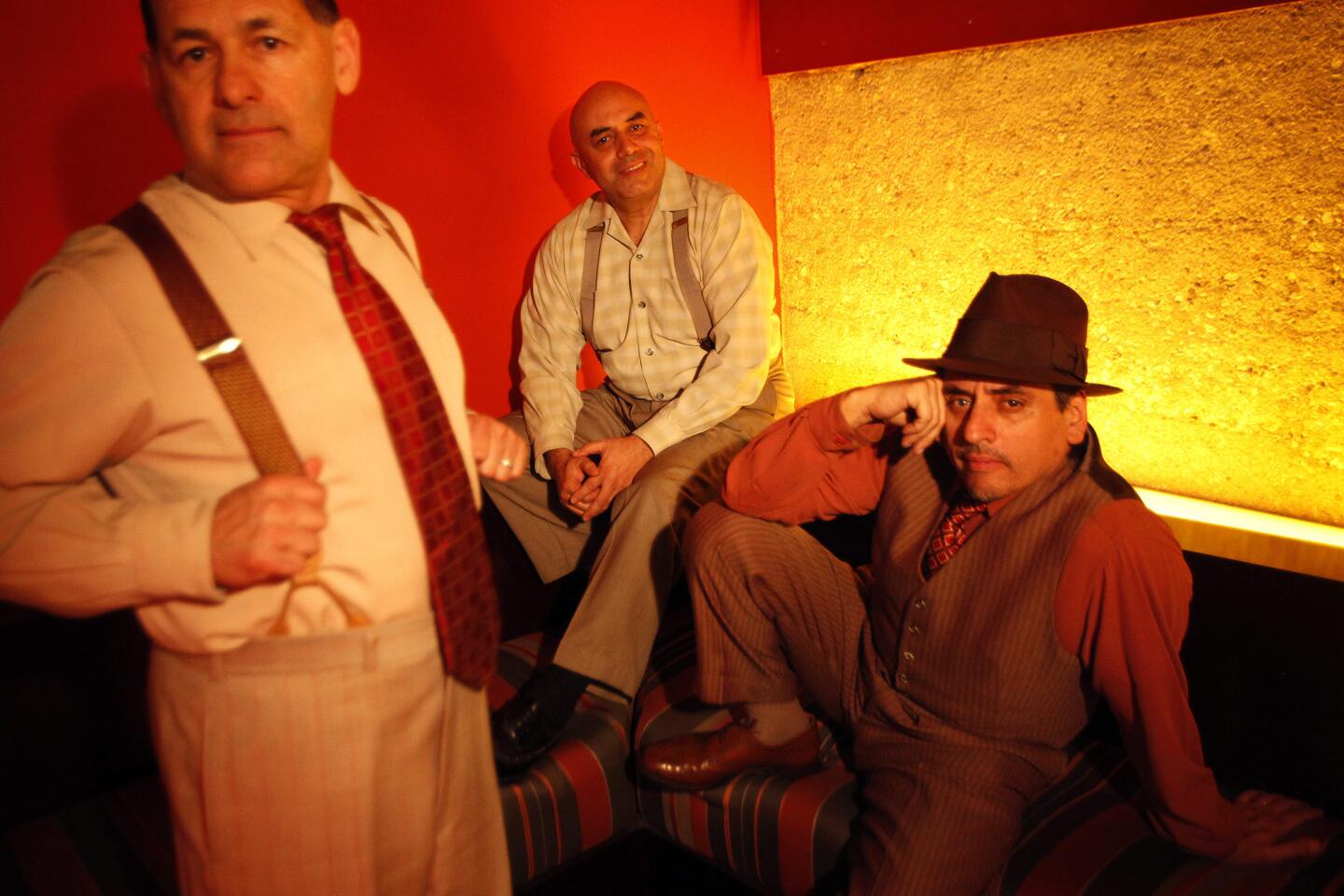Les Ballets de Monte-Carlo to debut Jean-Christophe Maillot’s ‘Chore’ in Orange County
- Share via
A masked couple — a ghostly, faceless Astaire and Rogers — swirls to composer Danny Elfman’s ominous orchestral score “Serenada Schizophrana.” The feathered fans of a Busby Berkeley kickline morph into the Hiroshima mushroom cloud. And doll-like female figures, suspended on wires and manipulated by their male partners, glide listlessly through space to a John Cage score.
Such are the arresting images in choreographer Jean-Christophe Maillot’s “Choré,” a phantasmagorial fantasia in five scenes that will make its U.S. debut Friday and Saturday when Les Ballets de Monte-Carlo performs at the Segerstrom Center for the Arts in Costa Mesa. “Choré” is Maillot’s discourse on American dance and the political eras that have shaped it.
See more of Entertainment’s top stories on Facebook >>
As the director of the French ballet troupe for more than 20 years, Maillot has created both story ballets and non-narrative works that all skew toward poetic Impressionism.
The motivation for choreographing the 75-minute “Choré” came from Maillot’s desire for a philosophical discussion of how and why we dance. He turned to French writer Jean Rouaud, winner of the Prix Goncourt — France’s top literary prize — for the historical novel “Fields of Glory.”
Rather than compose a libretto for the ballet, Rouaud concocted the “argument and texts” that ponder the relationship of Hollywood, ballet and modern dance to major events of the 20th century. Maillot, whose choreography treads the fine line between ballet’s refinement and contemporary dance’s slang vocabulary, sees a metaphorical relationship between Fred Astaire and Gene Kelly.
“Fred Astaire is the perfect symbol for me of the elegance and lightness of the body (gliding) above the floor without touching the ground — a link to classical ballet,” Maillot said in a phone interview from Moscow, where he was rehearsing the Bolshoi Ballet in his “The Taming of the Shrew” before its recent worldwide cinematic broadcast. “When Gene Kelly arrived, he grounded everything into the floor so that dance could connect to the reality of everyday life — like dancing in the street — especially for the huge studios producing musical comedy.”
Rouaud takes the bipolar nature of American dance beyond the giddy glitter of Hollywood to the spare, sober linearity of modern dance. When life hardened during the Great Depression, society hungered for the delights and defiant denials of the movie musical. But after the grim events of World War II, Maillot said, “the world changed forever and the great modern dance choreographers, like Merce Cunningham, all realized we could never dance the same way anymore.” As Jackson Pollock created art from chaos, the choreographic modernists fixed their gaze to an intellectual viewpoint.
Still, Maillot said, “I am a deep lover of dance. And I can be as happy if I see an original ‘Swan Lake’ as seeing the most daring kind of contemporary work that surprises me.”
He eschews the need to skewer one artistic style to defend another.
This week’s performances will be Les Ballets de Monte-Carlo’s third Orange County engagement since 2012. Two years ago, the company of 50 dancers presented the American premiere of “Lac,” Maillot’s version of “Swan Lake,” with dramaturgy by Rouaud, at the Segerstrom Center.
Maillot has made his mark through the strikingly dramatic visuals. In a passionate moment in his “Romeo and Juliet,” the Veronese lover belly-slides through Juliet’s straddled legs. In “The Taming of the Shrew,” a drunk Petruchio tumbles down a flight of stairs clenching a white rose in his teeth, then yanks Katherine by the jaw into a one-armed, overhead lift and settles her into a submissive pose over his knee.
The son of an art professor at L’École Nationale Supérieure des Beaux-Arts in Tours, Maillot thrives on artistic collaboration with designers, composer and writers to bring his ballets to life.
“A choreographer is nothing without the other artists,” he said. “You have to learn how to share. We have to forget each other and just serve the idea.”
Maillot commissioned his brother Bertrand Maillot as well as Yan Maresz and Daniel Ciampolini to write music for three parts of the ballet’s. Stage designs and costumes were created by Dominique Drillot, a frequent collaborator with Maillot, and Philippe Guillotel, known for his imaginative costumes for Cirque du Soleil.
In a historical link, Monaco was a home to Sergei Diaghilev’s legendary Ballets Russes, which paired dance with groundbreaking visual artists and composers in the early 20th century. (Les Ballets de Monte-Carlo was established by Princess Caroline of Monaco in 1985.)
In Choré, Maillot hopes to examine the history of American dance to determine where the art form stands in the present.
“I question myself not where we come from but where we are going,” he said, in light of the political, sociological and artistic events of history.
For the French choreographer, his fascination with dance comes from many angles. “Is it my brain? Or is it my heart? Is it my guts?” he has pondered for more than 20 years. “I don’t think I need to get an answer, just to put forth questions about it.”
“Choré” ends with a percussion finale, a sort of primal dance ceremony.
“It’s a way of saying each dance will just be a heartbeat,” Maillot said.
-----------------------------
Les Ballets de Monte-Carlo’s ‘Choré’
Where: Segerstrom Center for the Arts, 600 Town Center Drive, Costa Mesa
When: 7:30 p.m. Friday, 2 and 7:30 p.m. Saturday
Tickets: $29 and up
Info: (714) 556-2787, scfta.org
Running time: 1 hour, 15 minutes (no intermission)
More to Read
The biggest entertainment stories
Get our big stories about Hollywood, film, television, music, arts, culture and more right in your inbox as soon as they publish.
You may occasionally receive promotional content from the Los Angeles Times.
